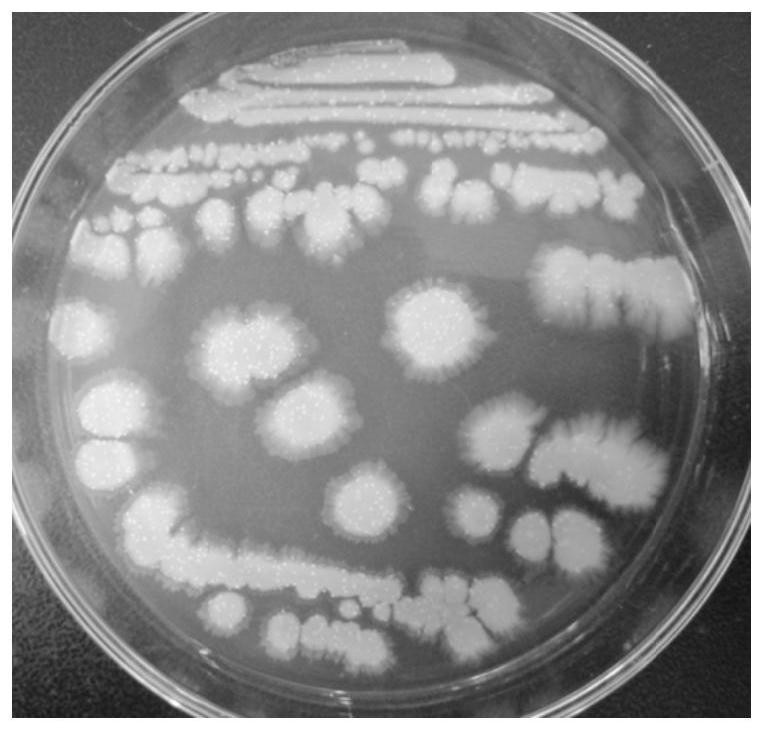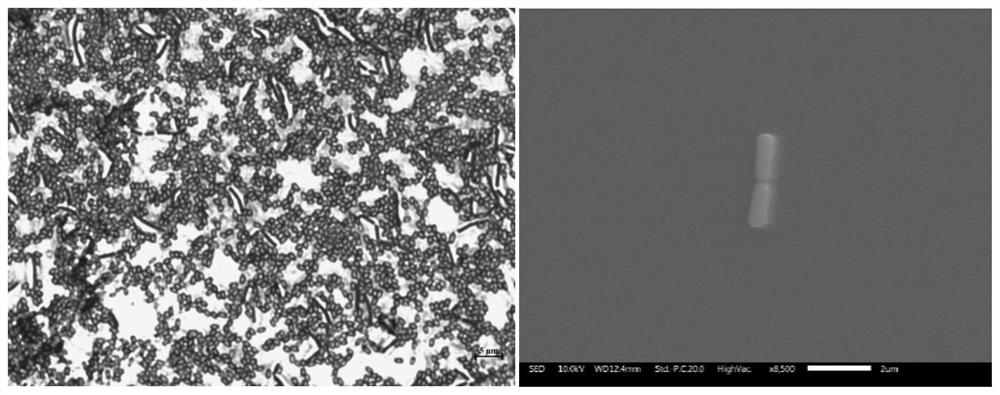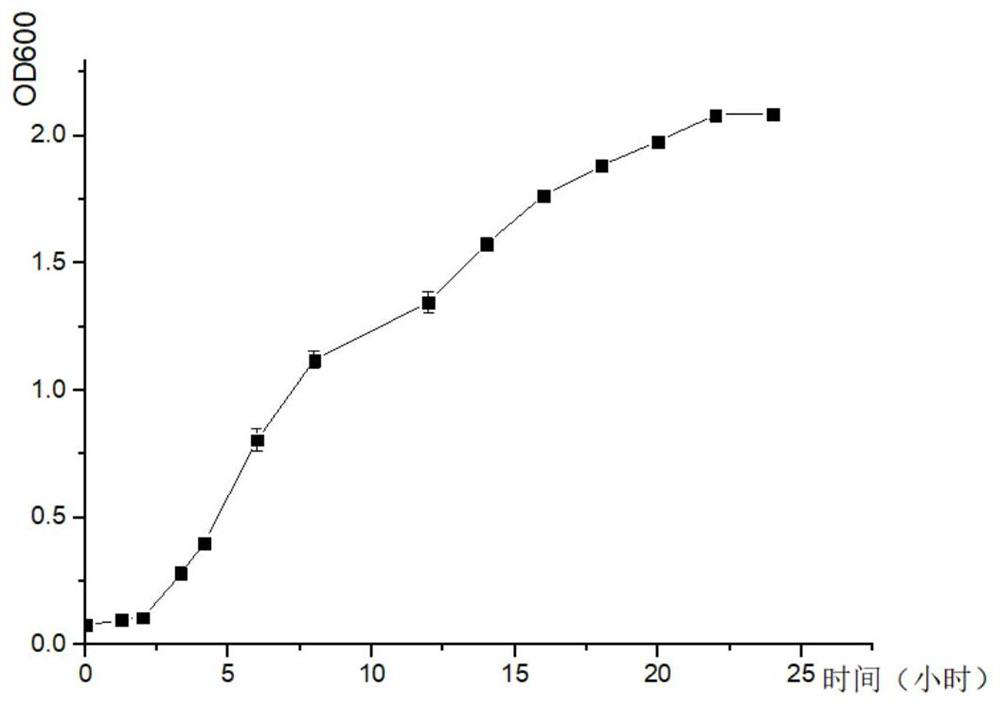Bacillus subtilis subsp. spizizenii and application thereof in inhibiting cyanobacterial bloom
A technology of Bacillus subtilis and subspecies, applied in the direction of bacteria, biological water/sewage treatment, and microbial-based methods, etc., can solve the problems of differentiation, evolutionary relationship, and four strains that cannot be used in conventional methods, and achieve broad application prospects , low-cost effect
- Summary
- Abstract
- Description
- Claims
- Application Information
AI Technical Summary
Problems solved by technology
Method used
Image
Examples
Embodiment 1
[0054] Example 1 Isolation and identification of Bacillus subtilis subspecies TK812 with algae inhibitory activity
[0055] The Bacillus subtilis subsp.spizizenii TK812 with algae-inhibiting activity in the present invention is isolated from the excrement of wild earthworms collected on the campus of Tianjin University of Science and Technology.
[0056] The specific method is:
[0057] 1. Sample Processing
[0058] Take a captured wild earthworm, wash its surface with sterile normal saline, place it in a test tube, take out the earthworm after it produces excrement, add an appropriate amount of sterile normal saline into the test tube, shake it well and put it in the nutrient broth Dilution coating was performed on the medium, and the coated plate was placed in a 30°C incubator for 48 hours, and a single colony was picked for shake flask culture. The culture condition is 220rpm, 37°C, and after 24 hours of culture, the algae-inhibiting activity microorganisms are screened. ...
Embodiment 2
[0080] Example 2 Inhibition experiment of Bacillus subtilis subspecies TK812 on Anabaena blooms
[0081] Take 6 bottles of healthy Anabaena culture solution (specification: 100ml / 250ml Erlenmeyer flask) in the logarithmic growth phase, numbered 1-6, of which No. 1-3 is used as the blank control group, and the blank nutritional meat is added according to the inoculum amount of 5%. Soup culture medium, No. 4-6 was used as the experimental group, and the enrichment culture solution of bacterial strain TK812 was added according to the same ratio (the enrichment solution of bacterial strain TK812: inoculated in the nutrient broth medium and carried out enrichment culture under the condition of 37°C shaker and 220rpm , cultured until the number of TK812 viable bacteria per milliliter of enrichment solution was 10 8 1), the Anabaena culture solution inoculated with the enriched culture solution of strain TK812 was placed at 28°C, 100rpm, 12h:12h light-dark cycle, and cultured under t...
Embodiment 3
[0088] Example 3 Inhibitory test of Bacillus subtilis subspecies TK812 to Microcystis aeruginosa
[0089] Take six bottles of Microcystis aeruginosa in the logarithmic phase of growth, numbered 1-6, and divide them into two groups on average. The first group is added with 5% nutrient broth blank medium, and the second group is enriched with 5% strain TK812 Mix the culture solution and place it in an incubator at 28°C for 24 hours with a continuous 4000lx light. Samples were taken every 24 hours to measure the absorbance at 730nm. According to the OD 730 Changes to judge the growth of Microcystis aeruginosa, OD 730 The measurement situation is as follows:
[0090] Table 4 strain TK812 to Microcystis aeruginosa OD 730 Impact
[0091]
[0092] It can be seen that the difference from Anabaena is that after adding the blank broth medium, the growth rate of Microcystis aeruginosa in the experimental group is slightly lower than that of the blank control group, and the number o...
PUM
 Login to View More
Login to View More Abstract
Description
Claims
Application Information
 Login to View More
Login to View More - R&D
- Intellectual Property
- Life Sciences
- Materials
- Tech Scout
- Unparalleled Data Quality
- Higher Quality Content
- 60% Fewer Hallucinations
Browse by: Latest US Patents, China's latest patents, Technical Efficacy Thesaurus, Application Domain, Technology Topic, Popular Technical Reports.
© 2025 PatSnap. All rights reserved.Legal|Privacy policy|Modern Slavery Act Transparency Statement|Sitemap|About US| Contact US: help@patsnap.com



